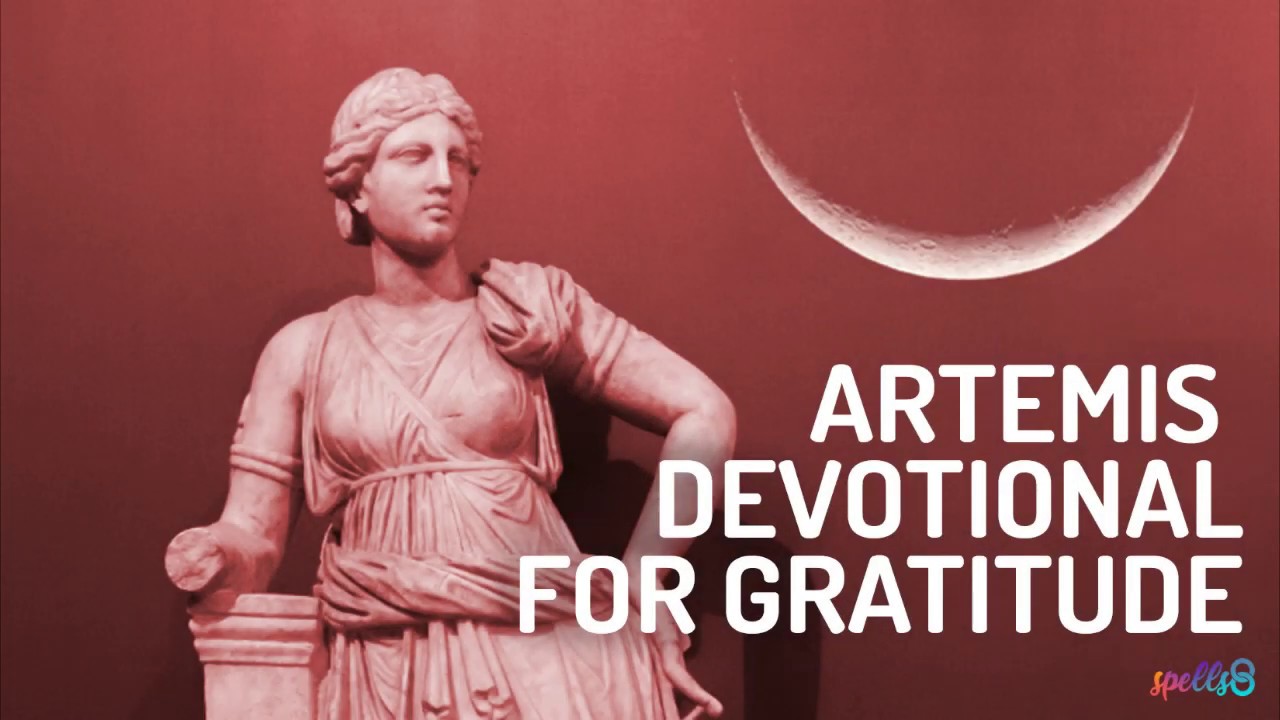?? Artemis Prayer: Wiccan Goddess of the Moon & Hunt ? [Gratitude Devotional Spell]
?️ Light a white candle during this devotional for Gratitude.
Daily Candle Rituals: https://spells8.com/wiccan-devotional/
Artemis is the goddess of the wilderness and hunting, she is often seen carrying a bow and arrows. She also became associated with the moon, as her brother Apollo was with the sun. Artemis was one of the most widely venerated deities in Greece and one of the oldest. In later times she was amalgamated with the Roman goddess Diana. In Etruscan mythology, she was known as Artume.
Use this invocation to Artemis as a Wiccan prayer for gratitude or as a ritual for the Moon. This hymn was inspired by the Orphic hymn to Artemis, from the late (Greek) Hellenistic period. It can be used to call upon Artemis in her crescent or full moon aspect.
Learn more about the Orphic Hymns at https://spells8.com/orphic-hymns/
Eternally young, Artemis is a very feminine and attractive goddess, usually depicted hunting and surrounded by wild animals. She is also often represented with a lunar torch, matching her symbolism of the Moon.
Offerings to Artemis: https://spells8.com/artemis-devotional/
The cult of Artemis in her various facets was very widespread in the ancient Mediterranean world. However, it is very likely that what classical sources collect as rituals in honor of this goddess were only in later dates, and that in their origins these were cults destined for various local divinities that ended up being assimilated by Artemis, the twin sister of Apollo.
In Sparta, Artemis was one of the main divinities, with an important sanctuary whose foundation dates back to before the culmination of the process of formation of the city. In the sanctuary of Artemis Ortia a curious rite of initiation known as “diamastigosis” was celebrated. This consisted of the provision of a series of food on an altar, which was protected by priests bearing whips. A group of young people had to try to seize the food, and to avoid it the priests had to beat them with the whips with all possible violence. It is possible that this was some kind of initiatory rite for Spartan ephebes. However, in Roman times this ritual ended up becoming a simple violent spectacle where the curious came to witness the bloody mistreatment of young people at the hands of priests.
In Athens, the ritual of the Brauronia was celebrated in honor of Artemis, a rite of passage in which young Athenians were consecrated to the goddess. During the duration of the ritual, the girls were called arktoi, that is, bear cubs, something that is consistent with the connection of Artemis with hunting and wild animals.
A sample of the complex process of syncretism suffered by some local deities until they were identified with Artemis was found in the cults held in the city of Ephesus in honor of this divinity. The Artemis of Ephesus was, unlike the rest of the devotions of this goddess, a divinity of maternal and telluric nature. We do not know the process of syncretism that led to identify this divinity with Artemis, but the sources of classical and late epoch already speak without any doubt of a cult in honor of this goddess.



![Private: [ID: NeLgNVsC8NU] Youtube Automatic](https://bizimtube.com/wp-content/uploads/2020/11/private-id-nelgnvsc8nu-youtube-a-236x133.jpg)
![Private: [ID: Hfd6_WtScRg] Youtube Automatic](https://bizimtube.com/wp-content/uploads/2020/11/private-id-hfd6wtscrg-youtube-au-236x133.jpg)
![Private: [ID: kze8Vscv2zY] Youtube Automatic](https://bizimtube.com/wp-content/uploads/2020/11/private-id-kze8vscv2zy-youtube-a-236x133.jpg)
![Private: [ID: MyloaV7mICg] Youtube Automatic](https://bizimtube.com/wp-content/uploads/2020/11/private-id-myloav7micg-youtube-a-236x133.jpg)
![Private: [ID: Ry9Cagigrng] Youtube Automatic](https://bizimtube.com/wp-content/uploads/2020/11/private-id-ry9cagigrng-youtube-a-236x133.jpg)
![Private: [ID: iPbkoCx_f7k] Youtube Automatic](https://bizimtube.com/wp-content/uploads/2020/11/private-id-ipbkocxf7k-youtube-au-236x133.jpg)
![Private: [ID: _KMff8vsO_E] Youtube Automatic](https://bizimtube.com/wp-content/uploads/2020/11/private-id-kmff8vsoe-youtube-aut-236x133.jpg)
![[ID: ylO_-c7s-BQ] Youtube Automatic](https://bizimtube.com/wp-content/uploads/2020/11/id-ylo-c7s-bq-youtube-automatic-236x133.jpg)
![[ID: uD5YCNbqaio] Youtube Automatic](https://bizimtube.com/wp-content/uploads/2020/11/id-ud5ycnbqaio-youtube-automatic-236x133.jpg)
![[ID: V53oxovEFiY] Youtube Automatic](https://bizimtube.com/wp-content/uploads/2020/11/id-v53oxovefiy-youtube-automatic-236x133.jpg)
![[ID: IPbI2zhDEb0] Youtube Automatic](https://bizimtube.com/wp-content/uploads/2020/11/id-ipbi2zhdeb0-youtube-automatic-236x133.jpg)
![[ID: CiMkhVCzLsY] Youtube Automatic](https://bizimtube.com/wp-content/uploads/2020/11/id-cimkhvczlsy-youtube-automatic-236x133.jpg)